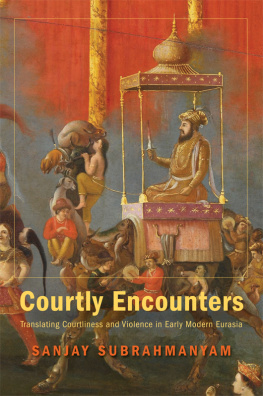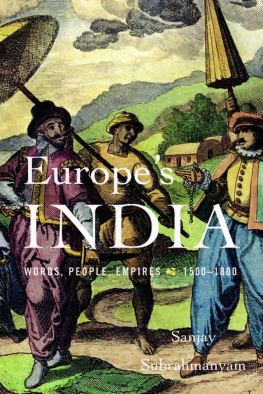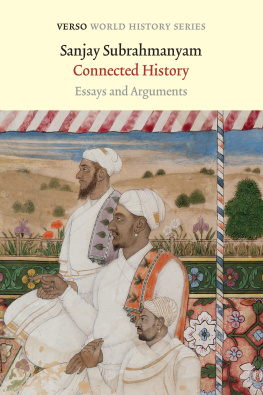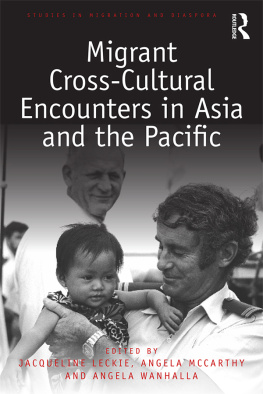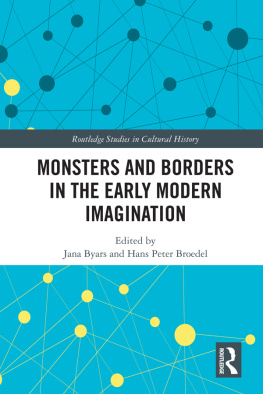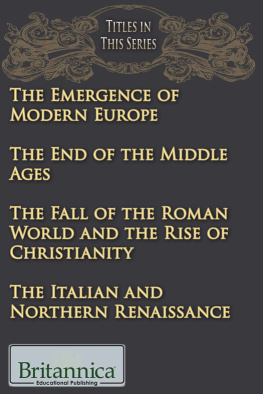Copyright 2012 by the President and Fellows of Harvard College
All rights reserved
Jacket art: Detail from Willem Schellinks, Mughal court scene with Shahjahan and his sons. No date, oil on canvas. Muse Guimet, Paris. Photograph by Thierry Ollivier, courtesy Muse Guimet
T HE M ARY F LEXNER L ECTURESHIP was established at Bryn Mawr College on February 12, 1928, by Bernard Flexner, in honor of his sister, Mary Flexner, a graduate of the College. The income from the endowment is to be used annually or at longer intervals, at the discretion of the Directors of the College, as an honorarium for a distinguished American or foreign scholar in the field of the humanities. The object of the lectureship is to bring to the College scholars of distinction who will be a stimulus to the faculty and students and who will help to maintain the highest ideals and standards of learning.
The Library of Congress has cataloged the printed edition as follows:
Subrahmanyam, Sanjay.
Courtly encounters : translating courtliness and violence in early modern Eurasia / Sanjay Subrahmanyam.
p. cm.
Includes bibliographical references and index.
ISBN 978-0-674-06705-9 (alk. paper)
1. Courts and courtiersEurasia. 2. EurasiaSocial conditions.
3. EurasiaSocial life and customs. I. Title.
GT3510.S83 2012
950dc23 2012015063
T his book is an experiment not only on my part but possibly also for many of those who were there at its origins, who encouraged me to write it. I was trained a quarter century ago as an economic historian of South Asia and the Indian Ocean in the sixteenth and seventeenth centuries, but my interests have gradually grown larger and more diverse, both thematically and geographically, over the years. The archives and texts I have used have also naturally expanded, though they usually remained limited to the period between about 1400 and 1850. In this process, I have frequently experienced both excitement and frustration. Many historians of diverse places in Latin America, East Asia, the Middle East, Southeast Asia, and Europe have been my willing interlocutors, sharing materials, questions, seminars, and projects; I cannot name them all here for obvious reasons. Nor will I name the stubborn minority of historians who have ever been (and continue to be) censorious of the newer historiographical trends represented by such projects as connected histories, preferring instead the comfortable certainties of a history of omniscient and cosmopolitan Europeans roaming the world from the Renaissance to the Enlightenment.
Although I grew up and was educated in India, I spent a good many years in the later 1990s and early 2000s in western Europe, often dining outdoors on spring and summer evenings with friends. Whether in Paris, Oxford, London, Naples, Pisa, or Berlin, we would be approached by young South Asian migrants who hoped to sell us flowers or trinkets but would then strike up conversations with us, using whatever languages were at hand. They were often sobering conversations, as they recounted how they had made their way through Turkey and Greece to the safer parts they found themselves in. One of them, a Punjabi called Ali, worked in a dner joint run by a Franco-Turk near the Gobelins in Paris; I sometimes had to mediate between him and his boss because although they had elements of several languages in common, communication still broke down. This made me feel quite virtuous until the day when Ali, finding me at the metro station Censier-Daubenton on my leisurely way to work at noon, said to me reproachfully, Well, if youre such a layabout, why dont you just teach me French? (agar tum itne vele ho to mujhe French kyon nah n sikh te). Every illusion I had had about mutual complicity suddenly dissolved. Understanding became something much more complicated than just an issue of language or languages.
The lectures that are the source of this book were delivered while I was in residence at Bryn Mawr College over a period of a little more than two weeks in November 2009. It was an enjoyable and thoroughly nostalgic time for me, even if my morning sleep was regularly disturbed by the ominous rumble of the early SEPTA train from Thorndale making its way to Thirtieth Street just past the window of my apartment at around 5:40. As an Angeleno of sorts, I often leapt up from my dreams thinking it was an earthquake. But it was still nostalgic because my first visit to the United States in 198788 had been to teach at the University of Pennsylvania, and this was an occasion to visit the Philadelphia area properly again, although so much had changed in the interim. Many faculty and friends, both in Bryn Mawr and in the broader area, helped make this a very smooth visit. The colleges president Jane McAuliffe, herself a scholar of Islam, was at the heart of the invitation and remained a solicitous host throughout. Beth Shepard-Rabadam made sure that everything worked as it should. Members of the History Department, notably Ignacio Gallup-Daz, Kalala Ngalamulume, Jennifer Spohrer, and Elly Truitt, as well as Christiane Hertel and Steven Levine from the Art History faculty, helped animate the visit and the rigorous follow-up discussions that occurred on the day after each lecture. The brunt of the hosting, including both shopping trips and visits to Center City, was patiently borne by Madhavi Kale, who ironically enough had studied with me at Penn in 1987 and been quite tolerant on that occasion, too. She also helped to host Carlo Ginzburg, who paid me a lightning visit at Bryn Mawr, delivered a wonderful talk on courtly encounters in China, and discussed Mughal painting with Yael Rice and myself at the Philadelphia Museum of Art.
Some historians, like vampires, are wont to look over their shoulders constantly. This professional deformation meant that when I was invited to deliver the Mary Flexner Lectures, I at once looked to see who had delivered them before me. The list of names was at once comforting, because it was so familiar, and disquieting, because it was so formidable. It was not at all easy to stand, as it were, where Arnaldo Momigliano had once stood. But I found comfort too in seeing the name of an old friend who had supported me when I was a young scholar who had barely completed a dissertation, the late Major Charles Ralph Boxer, who had spoken at Bryn Mawr in 197273, a year before Momigliano, on Women in Iberian Expansion Overseas. The work of these two historians is implicitly or explicitly evoked in the pages that follow, as is that of other scholars who have delivered these lectures, such as Svetlana Alpers.
A considerable literature exists on the subject of early modern encounters, focusing on how these provided contexts for the invention of new categories of perception and analysis as well as for the making or remaking of disciplines, including some of the modern social sciences. Histories of ethnology, anthropology, religious studies, international relations, political thought, and a variety of other related disciplines (including a version of world history itself) have a marked tendency to hark back to the sixteenth and seventeenth centuries when they seek the origins of these forms of contemporary knowledge. What is sometimes lost sight of in these considerations is the fact that the encounters usually did not take place between societies or cultural systems as such but between particular subcultures or segments of societies. Some of these were relatively asymmetrical encounters and dealings (as with the Iberian missionaries in their authoritarian rapport with subject populations in the missions of Latin America), others far less so. In these pages, it is my intention to focus on how courtly encounters were the crucial site for the forging of mutual perceptions and representations in Eurasia. This naturally implied a prior recognition of at least a crude parallel morphology, where the societal agents involved in the encounter saw each others societies as possessing somewhat similar political systems, dominated by rulers with courts, which in turn possessed systematic rules and conventions (what in the Perso-Arabic world might be termed adab ) that had to be deciphered and eventually translated and rendered commensurable. While the perhaps apocryphal cartoon figure of the alien may indeed have said, Take me to your leader, the instinct was surely a more widespread one.

